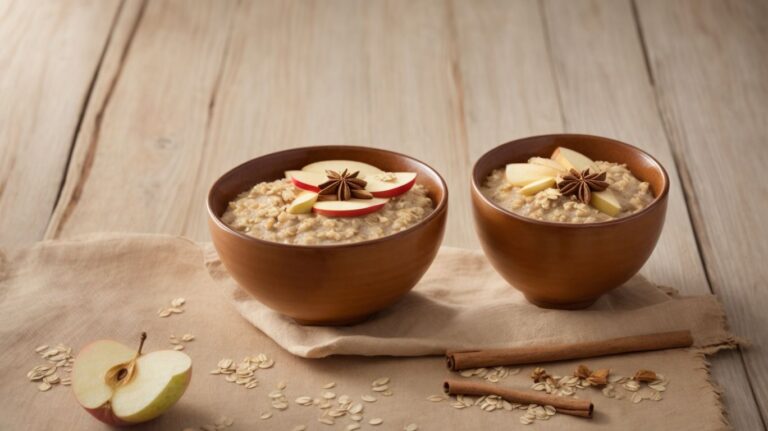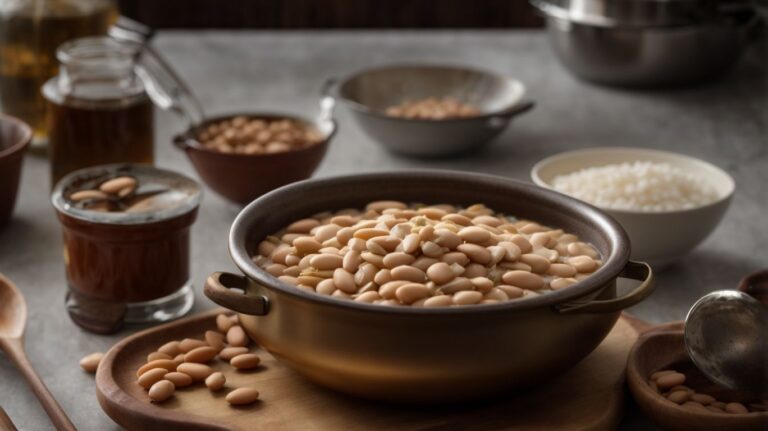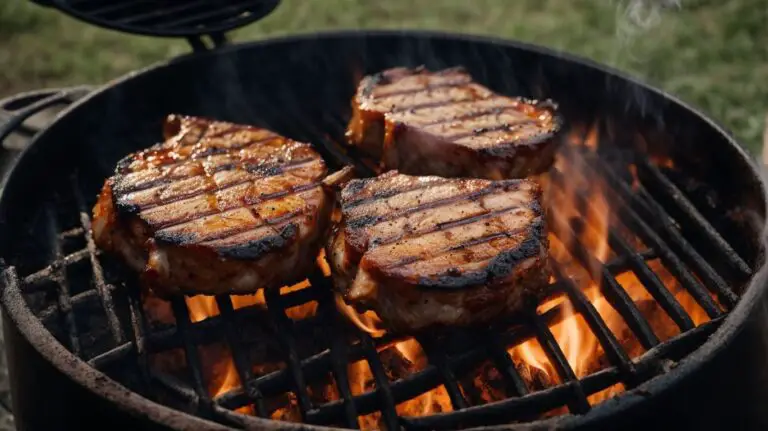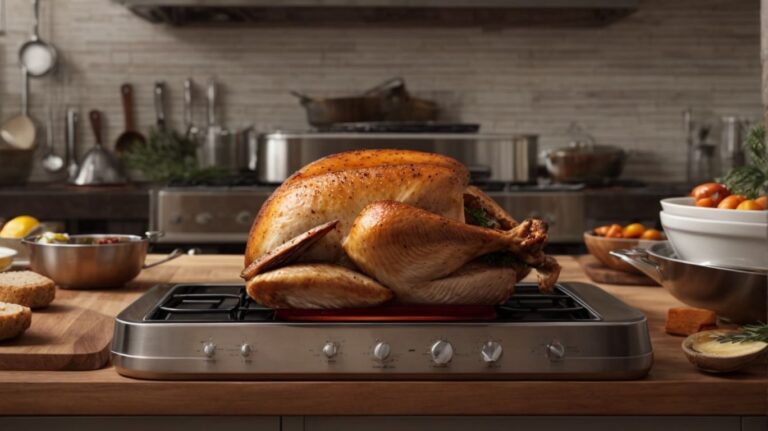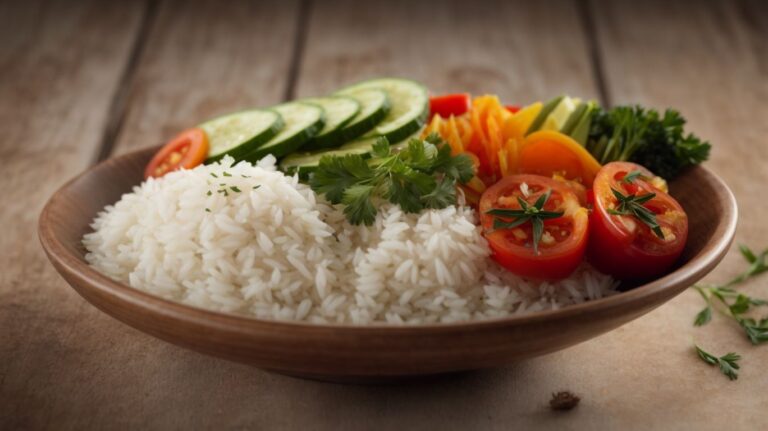How to Cook Over a Fire Without a Grill?
Are you looking to add some excitement to your cooking routine?
Cooking over a fire without a grill is a fantastic way to infuse unique flavors into your food, especially when you’re outdoors or camping.
We’ll explore the essential tools needed for this cooking method, how to prepare the fire for cooking, valuable tips for success, and some delicious recipes to try.
So, grab your skewers, aluminum foil, and Dutch oven, and let’s elevate your outdoor culinary experience!
Key Takeaways:
Why Cook Over a Fire Without a Grill?
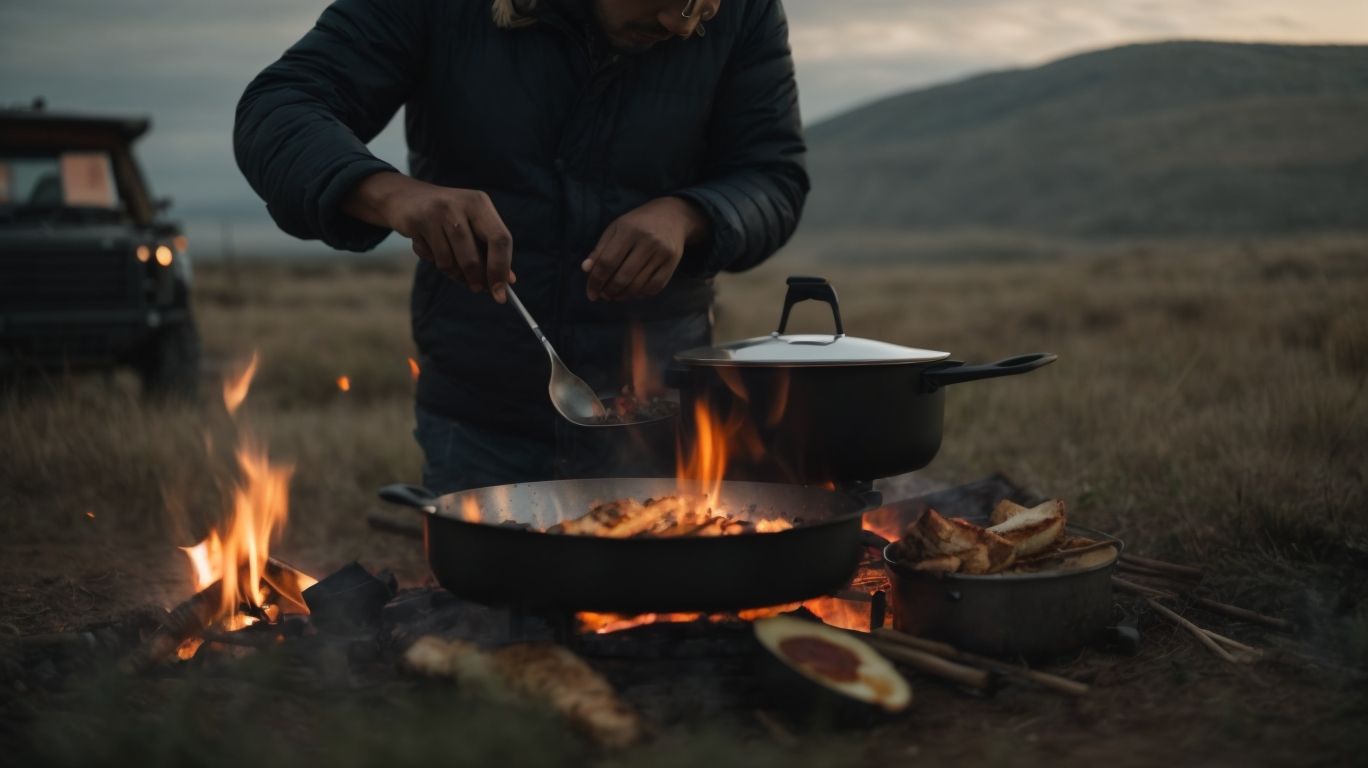
Credits: Poormet.Com – Ryan Hill
Cooking over a fire without a grill offers a unique culinary experience that infuses food with a distinct smoky flavor, making it a popular choice for outdoor enthusiasts and campers.
By utilizing the natural flames and embers of a fire, campfire cooking allows for a greater depth of flavor development in dishes compared to traditional grilling methods. The proximity of the food to the flames creates a caramelized exterior that seals in juices, resulting in a succulent and tender texture.
The ambiance of an open fire adds an element of adventure and connection to nature, enhancing the overall dining experience. Whether it’s roasting marshmallows over crackling flames or slow-cooking a hearty stew in a Dutch oven, the possibilities for campfire cuisine are endless.
Adds Unique Flavor to Food
Cooking over a fire without a grill imparts a distinctive flavor profile to dishes, elevating classics like s’mores and innovative campfire recipes developed by culinary experts like Meathead.
When ingredients come into direct contact with open flames, they undergo a unique transformation that infuses them with a smoky essence, enhancing their taste profile. Imagine the gooey marshmallow melting between two crispy graham crackers in a perfectly crafted s’more, its flavors heightened by the charred edges from the fire.
In the world of campfire cuisine, iconic dishes like Dutch oven chili and foil packet salmon exemplify the art of cooking in the great outdoors, where techniques like pit cooking and ash cooking have been refined over generations.
Ideal for Outdoor Cooking
Cooking over a fire without a grill is ideal for outdoor settings, enabling the preparation of delicious campfire meals using basic utensils and open flame cooking techniques at a serene campsite.
Whether you’re in the mountains, by the lakeside, or deep in the woods, the simplicity of fire cooking can turn an ordinary meal into a culinary adventure. With just a few essential tools like a sturdy cast iron skillet, skewers, and maybe a Dutch oven, you can whip up a feast under the stars. The crackling flames not only infuse your dishes with that distinct smoky flavor but also provide the perfect backdrop for storytelling and bonding with fellow campers.
Enhances Camping Experience
Cooking over a fire without a grill enhances the overall camping experience by promoting outdoor culinary adventures while emphasizing safety, essential gear, and the joy of fire cooking in natural surroundings.
When setting up a campfire for cooking, it is crucial to follow campfire safety protocols to prevent accidents and ensure a memorable outdoor experience. Bringing along a reliable fire extinguisher and having a clear understanding of how to handle the fire are essential precautions.
Along with safety measures, having the right camping gear such as durable cookware, utensils, and fire-resistant gloves can make cooking over an open flame more efficient and enjoyable. The smell of food sizzling over the fire, complemented by the serene sounds of nature, creates a unique outdoor cooking ambiance that elevates the dining experience.
What Are the Essential Tools for Cooking Over a Fire?
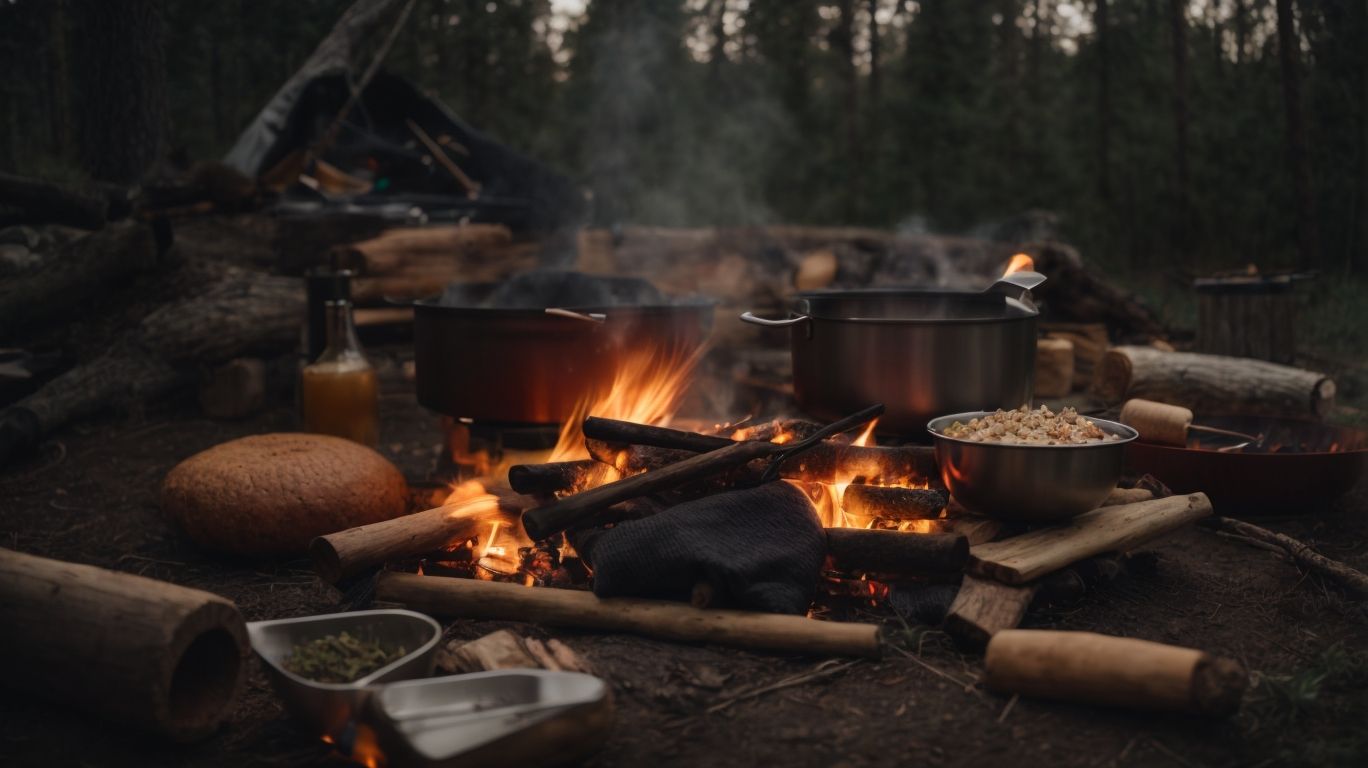
Credits: Poormet.Com – Justin Robinson
When cooking over a fire, essential tools such as sturdy cast iron cookware, specialized cooking gear, and versatile utensils are essential for mastering campfire techniques and preparing delicious campfire dishes.
Cast iron cookware is revered for its durability and ability to distribute heat evenly, making it ideal for searing meats and cooking stews over open flames. Specialized cooking gear, including tripods and Dutch ovens, enables campfire chefs to control heat levels and ensure consistent cooking results. Having specialized utensils tailored for roasting, grilling, and baking allows for a diverse range of campfire dishes to be effortlessly prepared.
Skewers
Skewers are versatile tools essential for campfire cooking, requiring proper handling based on campfire setup guidelines, etiquette, and adherence to any restrictions in the camping area.
These elongated metal or wooden rods play a crucial role in creating delicious meals over an open flame, making them a must-have for any outdoor cooking experience. When setting up your campfire, it’s important to position the skewers properly to ensure even cooking and avoid any accidents.
Following campfire etiquette is essential to maintain a safe and enjoyable environment for all campers. This includes not leaving skewers unattended near the fire, disposing of them properly after use, and respecting the tranquility of the camping area.
Campers should also be mindful of any restrictions imposed in the camping location, such as prohibited fire sizes or specific areas designated for cooking. By adhering to these rules, you not only ensure your safety but also help preserve the natural beauty of the surroundings.
Aluminum Foil
Aluminum foil is a versatile cooking essential for creating foil packet meals, grilling without a traditional grill, and observing safety precautions and rules for campfire cooking over hot coals.
Its ability to seal in flavors and juices makes it ideal for preparing delicious meals with minimal cleanup. When crafting foil packet meals, individuals can customize ingredients to suit different tastes, from vegetables and meats to seasonings and sauces. In the absence of a grill, folding aluminum foil into a makeshift cooking surface over the campfire can serve as a practical solution, enabling outdoor enthusiasts to achieve that sought-after smoky flavor.
Cast Iron Pans
Cast iron pans are essential for preparing flavorful campfire meals, showcasing classic campfire techniques, and honoring cherished campfire traditions while prioritizing safety in campfire setup.
The robust nature of cast iron pans allows for even heat distribution, resulting in perfectly cooked meals over an open flame. Their durability makes them ideal for withstanding high temperatures and rough outdoor conditions, making them a staple tool for campfire cooking enthusiasts. Using cast iron pans harkens back to historic cooking methods that have been passed down through generations, adding a sense of nostalgia and authenticity to the outdoor cooking experience.
Traditional campfire setups emphasize the use of cast iron pans for their ability to enhance the flavors of dishes and create a unique smoky taste that cannot be replicated in a conventional kitchen setting.
Dutch Oven
The Dutch oven is a versatile campfire gear essential for complying with campfire regulations, following proper cooking procedures, and embracing recommended campfire cooking techniques and suggestions for optimal results.
Regarding adhering to campfire regulations, the Dutch oven stands out as a tried and tested option that meets most guidelines in outdoor cooking settings. Its design and material make it ideal for safely containing heat and controlling temperatures, ensuring that your meals are cooked efficiently and safely.
Using a Dutch oven enables campers to execute correct cooking procedures with ease. From slow simmering stews to baking bread over hot coals, this versatile pot allows for a wide range of culinary creations. Its ability to evenly distribute heat ensures that dishes are cooked uniformly, preventing hot spots and burnt food.
Embracing recommended campfire cooking techniques with a Dutch oven can truly elevate your outdoor culinary experience. Whether you are sautéing, roasting, or braising, the Dutch oven provides a consistent cooking environment that enhances flavors and textures. Exploring different seasoning and ingredient combinations can further enhance the taste of your campfire creations.
How to Prepare the Fire for Cooking?
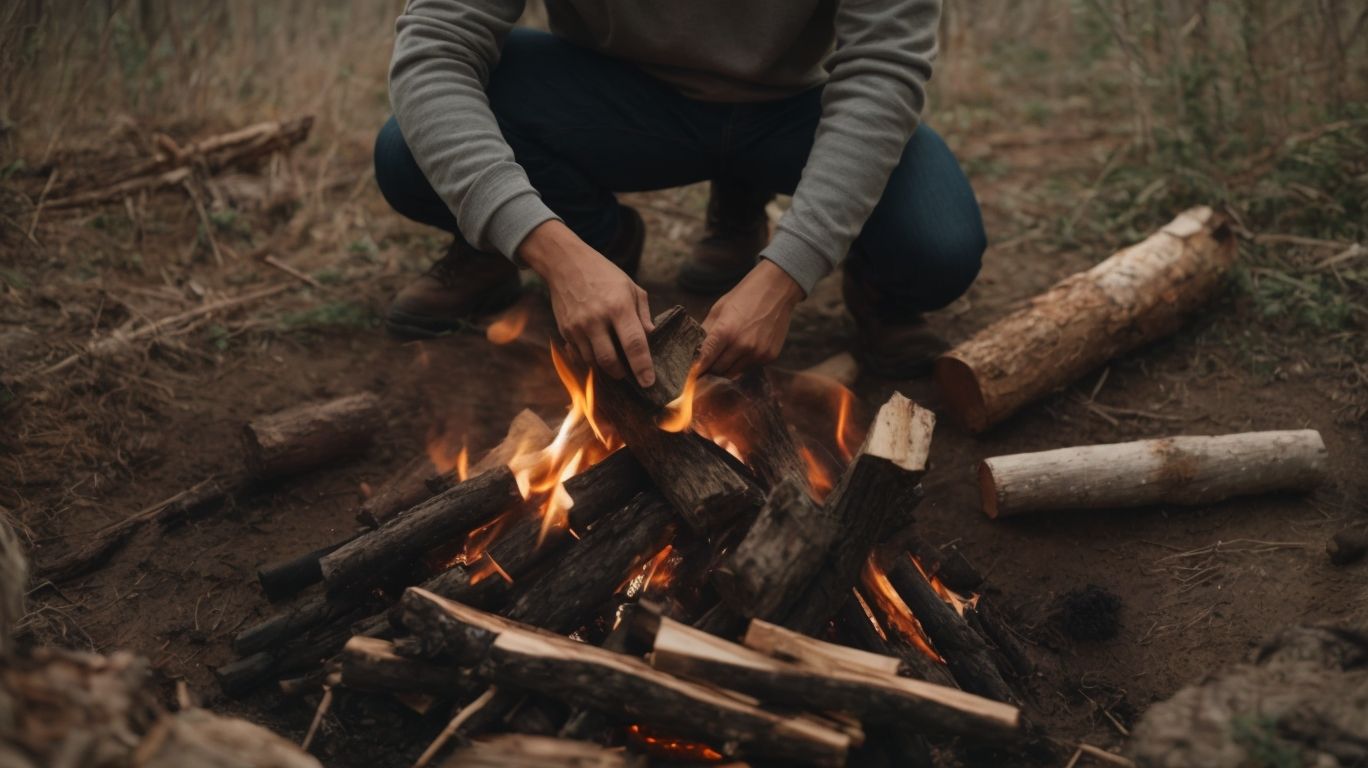
Credits: Poormet.Com – David Nguyen
Preparing the fire for cooking involves understanding the behavior of embers, prioritizing campfire safety precautions, and adhering to fire cooking regulations to ensure a controlled and secure campfire environment.
One fundamental step in preparing a fire for cooking is to carefully select the appropriate fire pit location, ensuring it is clear of any overhanging branches or flammable materials. This minimizes the risk of sparks causing accidental fires. Next, it’s crucial to build a proper fire lay, such as a teepee or log cabin structure, to allow for optimal airflow and efficient burning. Regularly tending to the fire by adding small amounts of fuelwood helps maintain a consistent flame, gradually producing the desired embers for cooking. Additionally, monitoring the fire and arranging the logs to create a bed of hot embers for cooking is essential for successful campfire cooking.”
Choose the Right Location
Selecting the appropriate campfire location is crucial for a successful cooking experience, requiring adherence to established traditions, proper gear setup, and clear instructions for optimal cooking conditions.
Regarding setting up a campfire for cooking, it is more than just finding a spot. Location plays a vital role in the overall camping experience. An ideal location should be away from strong winds to prevent hot embers from flying, while also being close enough to resources like water and firewood. Following traditional practices ensures respect for nature and safety. Setting up the right gear, such as grills and cooking utensils, is essential for efficient cooking over a campfire. Adhering to setup instructions ensures a safe and enjoyable cooking environment for all campers.
Gather Firewood
Collecting suitable firewood is a vital step in preparing for campfire cooking, ensuring availability of essential campfire gear, safety precautions, and necessary items for cooking various campfire dishes.
Having the right type of firewood not only influences how efficiently your campfire burns but also impacts the flavors of your meals. Opt for seasoned hardwood like oak or maple as they burn longer and produce a steady heat. It’s crucial to gather a mix of kindling, tinder, and fuel wood to maintain a well-balanced fire. Utilizing a fire starting kit with matches, lighters, and fire starter cubes is essential for hassle-free ignition. Prioritize safety by clearing the area around the fire, having a first aid kit, and keeping a bucket of water nearby for emergencies.
Build a Fire Pit
Constructing a fire pit is essential for open flame cooking, following proper campfire setup guidelines, observing campfire etiquette, and utilizing recommended gear to create a conducive cooking environment.
When starting your fire pit, ensure the location is clear of any overhanging branches or debris that could catch fire. Clear a safe distance around the pit to prevent accidental burns or fires spreading. Use a fire ring or create a circle of rocks to contain the flames neatly. Once the pit is ready, gather quality firewood, such as seasoned hardwood, to ensure a consistent burn and minimal smoke. Remember to keep a bucket of water or a fire extinguisher nearby for safety precautions.
What Are Some Tips for Cooking Over a Fire Without a Grill?
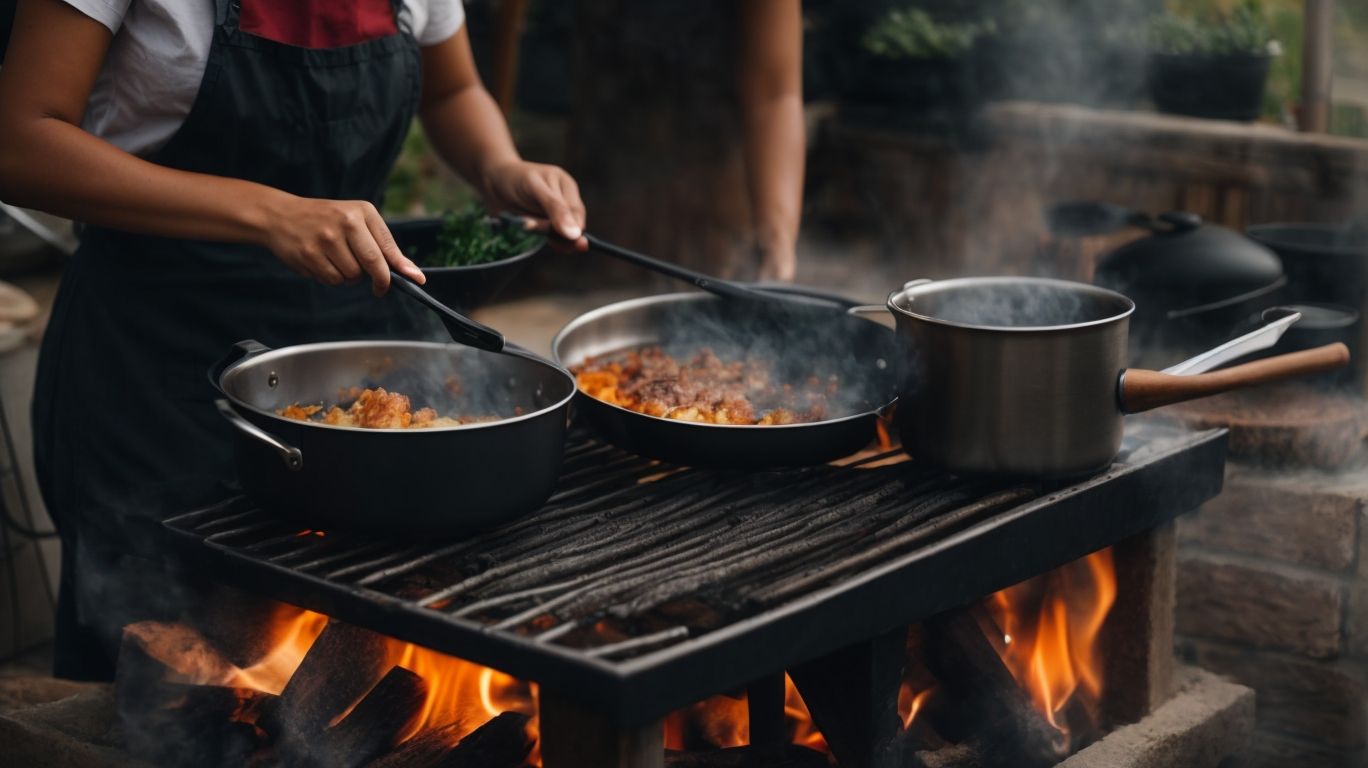
Credits: Poormet.Com – Michael Hernandez
Mastering the art of cooking over a fire without a grill requires following expert culinary tips, drawing upon the rich campfire experience, prioritizing safety precautions, and utilizing appropriate utensils for a seamless cooking process.
When venturing into the world of campfire cooking, it’s essential to understand the nuances of heat control. Cooking over flames or embers demands a keen eye to gauge the perfect temperature for your culinary creations. A common mistake is placing food directly into high flames, leading to burnt exteriors and undercooked interiors. Instead, position your food at a moderate distance from the fire and utilize indirect heat to achieve even cooking.
Use a Cooking Surface
Utilizing a designated cooking surface is essential for safe and efficient campfire cooking, requiring adherence to safety tips, proper location selection, following guidelines, and using appropriate utensils for optimal results.
When cooking over a campfire, having a designated area for food preparation not only ensures safety but also enhances the overall cooking experience. A proper cooking surface helps control the heat distribution, reducing the risk of accidental burns or fires. Campfire safety measures should always be a top priority to avoid potential hazards. Selecting the right location for your cooking setup is crucial to prevent unwanted flare-ups or damages to the surroundings. By following established guidelines and using the correct utensils designed for outdoor cooking, you can enjoy delicious meals while staying safe during your outdoor adventures.
Control the Heat
Maintaining control over the heat levels during campfire cooking is crucial for successful culinary outcomes, necessitating adherence to safety precautions, fire cooking techniques, regulatory norms, traditions, and safety tips.
One of the key components of heat control in campfire cooking is understanding the type of wood and its burning properties. For instance, hardwoods like oak or hickory burn slower and hotter, making them ideal for long cooking sessions, while softer woods like pine burn faster and cooler, suitable for quick meals.
In addition, strategic placement of pots and pans around the campfire can help regulate heat distribution. Placing the cookware closer or farther from the flames can adjust the intensity of heat applied to the food, preventing burning or undercooking.
Monitor the Food
Regularly monitoring the cooking progress of food over a campfire is essential to ensure optimal results, requiring familiarity with outdoor cooking methods, campfire meal preparation techniques, safety precautions, and dish-specific considerations.
When cooking over a campfire, one must pay close attention to the heat intensity and distribution, ensuring even cooking. Utilizing tools like grill thermometers and adjustable grates can help regulate the temperature, preventing undercooking or burning. Different dishes, such as stews versus grilled meats, demand varied cooking times and heat levels, necessitating adaptability in your campfire cooking approach. Maintaining a safe cooking zone, clear of flammable materials, is vital to prevent accidents and ensure a pleasant outdoor cooking experience.
What Are Some Delicious Recipes for Cooking Over a Fire Without a Grill?
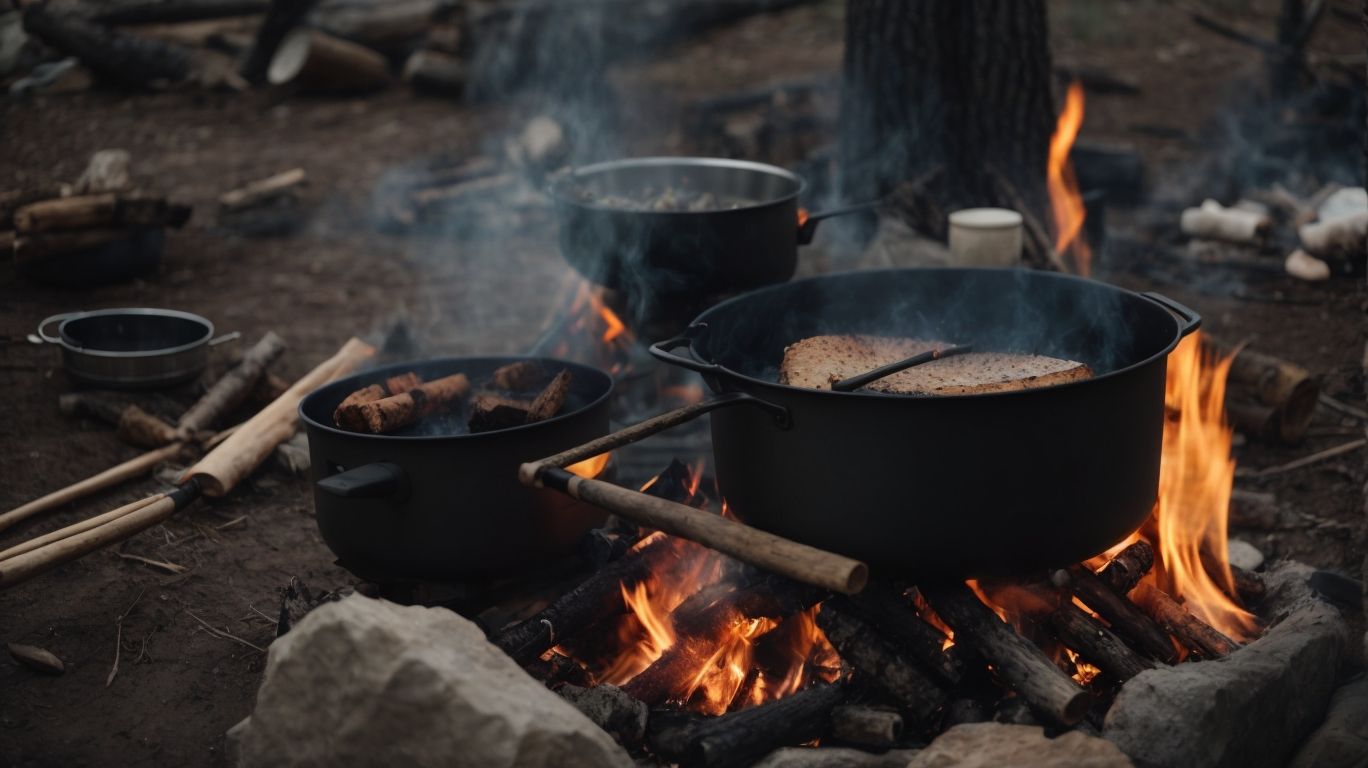
Credits: Poormet.Com – Brian Miller
Exploring flavorful recipes for cooking over a fire without a grill unveils a world of culinary delights tailored for adventurous palates, showcasing diverse campfire dishes that cater to the tastes of wild adventurers and seasoned campfire chefs.
Whether you’re a camping enthusiast seeking new outdoor dining experiences or a nature lover looking to elevate your wilderness dining game, these campfire recipes are sure to ignite your taste buds and creativity.
From smoky roasted vegetables and skewers to hearty foil packet meals filled with aromatic herbs and spices, the possibilities for grill-less cooking over an open flame are endless.
Imagine savoring sizzling campfire pizzas with perfectly crispy crusts or indulging in gooey s’mores made from scratch under the starlit sky.
With a pinch of creativity and a dash of culinary flair, you can transform your campfire into a gourmet kitchen and create unforgettable dining memories in the great outdoors.
Campfire Nachos
Campfire nachos are a crowd-pleasing campfire dish that combines crunchy tortilla chips, savory toppings, and gooey melted cheese, requiring essential gear, safety precautions, and proper campfire setup for a delectable outcome.
For a successful campfire nacho experience, it’s crucial to have sturdy heat-resistant gloves to handle hot cookware and tools efficiently. A cast-iron skillet is ideal for achieving that perfect blend of crispy and cheesy goodness. When setting up your campfire, remember to choose a safe location away from overhanging branches or flammable materials, ensuring you have a clear, level surface.
As you build your fire, follow the Leave No Trace principles by using existing fire rings or creating a proper fire pit with rocks. Keeping a fire extinguisher and a bucket of water nearby is essential for emergencies, providing that extra layer of safety.
Grilled Pizza
Grilled pizza is a flavorful campfire delight that blends crispy crust, zesty sauce, and bubbling cheese, requiring adherence to campfire guidelines, etiquette, setup norms, traditions, and proper gear usage for an authentic pizza experience.
To begin your culinary adventure, ensure you have a sturdy campfire pit or grill set up safely away from flammable materials, following all relevant fire regulations. Choosing the right dough is crucial, whether homemade or store-bought, to withstand the heat of the flames and achieve that perfect charred taste. Once your dough is prepared, have an assortment of classic pizza toppings such as fresh mozzarella, basil, and tomatoes at hand to create that authentic Italian flavor profile.
Foil Packet Meals
Foil packet meals are convenient and customizable campfire options that encompass a variety of ingredients packed in foil, necessitating observance of safety precautions, adherence to campfire rules, procedural guidelines, and respect for culinary traditions for a satisfying dining experience.
When preparing foil packet meals for your campfire adventures, it is crucial to ensure that the foil packets are securely sealed to avoid any potential accidents. Campfire safety is paramount to enjoy your meal while keeping the environment protected. Incorporating a diverse array of flavors in your foil meals not only adds excitement but also showcases the rich heritage of campfire cooking traditions. Remember, following guidelines for responsible campfire practices contributes to enhancing your overall experience in the great outdoors.
Dutch Oven Peach Cobbler
Dutch oven peach cobbler is a delectable campfire dessert that combines sweet peaches, cinnamon, and buttery cobbler topping, requiring a suitable fire pit, specialized cooking gear, mastery of campfire techniques, and observance of safety precautions for a delightful treat.
When preparing this indulgent treat, start by selecting ripe and juicy peaches that are bursting with flavor. The combination of the fruit’s natural sweetness with the warm spices like cinnamon creates a symphony of taste that satisfies every sweet tooth.
To ensure that your Dutch oven peach cobbler turns out to be a scrumptious success, it’s essential to have the right camping equipment, such as a sturdy Dutch oven and heat-resistant gloves, to handle the hot coals safely. Mastering the art of regulating the heat from the campfire beneath the Dutch oven is crucial, as it determines the perfect texture of the cobbler topping – crispy on the outside and soft in the middle.
Safety precautions are paramount when cooking over a campfire. Keep a bucket of water nearby for emergencies, wear appropriate clothing to protect from sparks, and always supervise the cooking process closely to avoid accidents.
Conclusion: Enjoy the Adventure of Cooking Over a Fire Without a Grill

Credits: Poormet.Com – Frank Hill
Embark on the exciting culinary journey of cooking over a fire without a grill, relishing the immersive campfire experience while upholding essential guidelines, etiquette, safety tips, and proper setup for memorable outdoor culinary escapades.
Imagine the crackling sounds of the fire, the gentle waft of smoke carrying the tantalizing aroma of your dish, and the warmth of the flames dancing around you as you cook. It’s a primitive yet deeply satisfying way to connect with nature and your food.
To fully enjoy this adventure, observe proper campfire safety by never leaving the fire unattended, ensuring it is completely extinguished before leaving, and following any regulations in the area. Maintaining a respectful distance from the fire, using appropriate cooking tools, and organizing a designated cooking zone can enhance the experience while ensuring safety.
Frequently Asked Questions
How to Cook Over a Fire Without a Grill?
1. How can I cook food over a fire without a grill?
There are several ways to cook over a fire without a grill. You can use a cast iron skillet, a tripod and grate, or even cook food on a stick.
2. Can I still achieve a smoky flavor without a traditional grill?
Yes, you can! Using wood chips or hardwood charcoal can give your food a delicious smoky flavor when cooking over a fire.
3. What are some tips for cooking over a fire without a grill?
Make sure to have a stable cooking surface, such as rocks or a flat piece of metal. Also, adjust the height of your cooking surface to control the temperature of your fire.
4. Is there a specific type of wood that works best for cooking over a fire?
Hardwoods like oak, hickory, or mesquite are best for cooking over a fire because they burn hot and produce a steady heat.
5. Can I use aluminum foil to cook over a fire without a grill?
Yes, aluminum foil can be used to cook food over a fire without a grill. It’s a great option for cooking vegetables or delicate foods that may fall through the grates.
6. Are there any safety precautions I should take when cooking over a fire without a grill?
Always make sure to have a fire extinguisher or water nearby in case of emergencies. Also, use caution when handling hot surfaces and be mindful of any sparks or flying debris.


